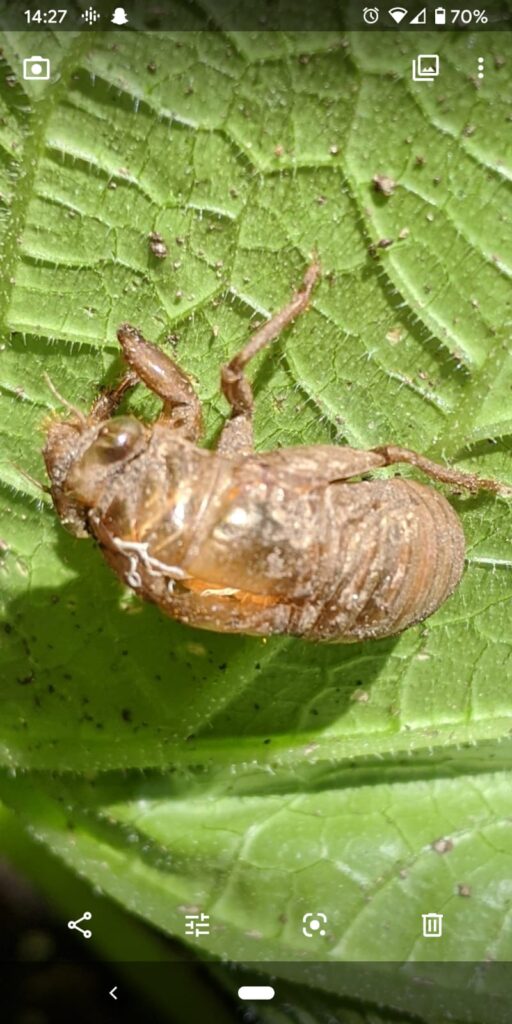
I live in North York. We planted 3 rhubarb plants and 3 cucumber plants this summer in 2 planting boxes (36 inches high by 29 inches deep by 52 inches long) that are on either side of the walkout area steps from our basement backyard patio doors. The backyard faces north. It is a shady backyard (large Manitoba maple, pine trees) but this area gets a decent amount of sun.
Over the last week, we have found 2 ‘skeletons’ of some type of beetle or bug clinging to the underside of a cucumber plant leaf and a rhubarb plant leaf. The exoskeletons are large, over 1 inch long, open along the back spine where the critter emerged and the exoskeletons still cling to the underside of the leaf for a few days til they fall off.
Can you identify this beetle or bug? is is beneficial or harmful to the plants? Thank very much!
What you have found is the exoskeleton of the Cicada, whose characteristic buzzing sound – the mating call of the male – is a common sound in Toronto’s hot and muggy August weather. Toronto (and Ontario) is home to what is commonly called the dog-day or annual Cicada, Neotibicen canicularis. This insect has a fascinating life cycle and does only very minimal damage, if any, to its plant hosts. Cicada nymphs live underground, and feed on root juices (doing little to no damage to the trees which are their typical host in this phase of their life). When the nymphs emerge, they find a plant on which to molt, after which they enter their adult phase. How lucky you are to have hosted these amazing creatures.
For a closer look and more information, here are some interesting sites – the High Park blog has a terrific video of the molting process.
https://www.highparknature.org/wiki/wiki.php?n=Insects.Cicadas
http://www.toronto-wildlife.com/Insects/True_Bugs/Cicada/true_bugs_cicada.html
https://www.bbg.org/news/will_the_cicadas_hurt_your_plants

